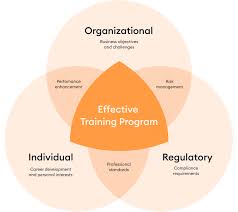Training needs assessment, also known as gap analysis, is a systematic process used to identify the qualifications employees need to meet the demands of a specific job or role. This involves not only identifying the job requirements, but also determining the extent to which these requirements must be fulfilled.
The assessment relies on comparing two critical profiles:
-
Job Requirements Profile
This profile reflects the future requirements of a specific job or position. It is developed through job studies, task analyses, and observations, providing a comprehensive view of what the role demands in terms of skills, knowledge, and behaviors. -
Employee Qualification Profile
This profile represents the employee’s current qualifications. It is typically established through qualification analyses, such as personnel assessments, interviews, or performance evaluations.
By comparing the requirements profile with the qualification profile, HR professionals can identify and address alignment issues as part of broader personnel planning, including decisions around personnel development or internal transfers.
This comparison reveals three possible outcomes:
-
Qualitative Undercoverage: Also known as a qualification gap, where the employee lacks required skills—prompting the need for training or development.
-
Qualitative Overcoverage: Also called a requirement gap, where the employee is overqualified or underutilized—potentially signaling the need for role adjustment or new responsibilities.
-
Qualitative Coverage: Where the employee’s qualifications match the job requirements—indicating suitability for the role.
This process ensures that training initiatives are targeted and aligned with both individual development and organizational goals.
« Back to Glossary Index





![15 Employee Offboarding Templates That Save Hours of HR Time [Free Downloads] 15 Employee Offboarding Templates That Save Hours of HR Time [Free Downloads]](https://i1.wp.com/www.hrcloud.com/hubfs/Header.png?w=150&resize=150,100&ssl=1)
